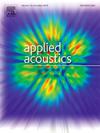阿尔及利亚几条道路交通噪音的现场测量
IF 3.4
2区 物理与天体物理
Q1 ACOUSTICS
引用次数: 0
摘要
本研究提出了一种实验方法来研究轮胎滚动噪声与路面特征之间的关系,特别是粗糙度和纹理。测量采用了评估路面对交通噪声影响的两种主要方法:经过法和近距离法(cpx样)。后者利用轮胎不同于ISO参考轮胎和麦克风放置在一个潜在的半混响腔。最初,来自联邦公路和RLS 90模型的噪声水平预测与城市附近的通行方法测量结果进行了比较,而不是像通常那样与LA eq值进行比较。验证过程表明,在这种环境下,联邦公路模型提供了更准确的结果。随后,在阿尔及利亚广泛的道路网络上进行了广泛的交通流量测量,为预测模型提供了输入数据,并实现了噪声水平预测。调查结果表明,在白天和夜间,噪音水平经常超过国家规定的阈值,特别是在粗糙的人行道上。使用非标准设备实现CPX-like方法,然后使用br本文章由计算机程序翻译,如有差异,请以英文原文为准。
In-situ measurements of traffic noise on several roads in Algeria
This study presents an experimental methodology to investigate the correlation between tire rolling noise and pavement surface characteristics, specifically roughness and texture. Measurements were conducted using the two primary methods employed to assess the influence of road surfaces on traffic noise: the Pass-By Method and a Close Proximity-like (CPX-like) method. The latter utilizes a tire different from the ISO reference tire and a microphone placed in a potentially semi-reverberant cavity. Initially, noise level predictions from the Federal Highway and RLS 90 models were compared with Pass-By Method measurements near urban areas, rather than with LA,eq values, as is commonly done. The validation process demonstrated that the Federal Highway model provides more accurate results in this environment. Subsequently, extensive traffic flow measurements were carried out on a broad road network in Algeria, supplying input data for the prediction model and enabling noise level forecasting. Findings indicate that, during both day and night periods, noise levels frequently exceed the thresholds set by national regulations, particularly on rough pavements. The CPX-like method, implemented with non-standard equipment, was then employed to measure tire-road noise during vehicle rolling, following system calibration using a Brüel & Kjær (BK) 2270 sound level meter as a reference. The experimental procedure assessed noise signals generated by tires across various road sections, examining both smooth and rough pavement surfaces. The adherence and Longitudinal Friction Coefficient (LFC) varied across sections due to differing traffic loads, including light and heavy vehicles. Additionally, a test section paved with semi-granular bituminous concrete (SGBC 0/14) was analyzed, revealing that the particle size distribution of aggregates plays a role in noise reduction. Experimental results suggest that further adjustments to this formulation could lower instantaneous tire-road noise levels. Comprehensive roughness, texture, and friction measurements across multiple road sections confirmed that the CPX-like method’s sound level readings correlate with surface roughness, particularly the Mean Profile Diameter (MPD) and LFC. A decrease in MPD was associated with a 2 dB reduction in noise level, while an LFC of 0.25 led to an increase of 2.5 dB.
求助全文
通过发布文献求助,成功后即可免费获取论文全文。
去求助
来源期刊

Applied Acoustics
物理-声学
CiteScore
7.40
自引率
11.80%
发文量
618
审稿时长
7.5 months
期刊介绍:
Since its launch in 1968, Applied Acoustics has been publishing high quality research papers providing state-of-the-art coverage of research findings for engineers and scientists involved in applications of acoustics in the widest sense.
Applied Acoustics looks not only at recent developments in the understanding of acoustics but also at ways of exploiting that understanding. The Journal aims to encourage the exchange of practical experience through publication and in so doing creates a fund of technological information that can be used for solving related problems. The presentation of information in graphical or tabular form is especially encouraged. If a report of a mathematical development is a necessary part of a paper it is important to ensure that it is there only as an integral part of a practical solution to a problem and is supported by data. Applied Acoustics encourages the exchange of practical experience in the following ways: • Complete Papers • Short Technical Notes • Review Articles; and thereby provides a wealth of technological information that can be used to solve related problems.
Manuscripts that address all fields of applications of acoustics ranging from medicine and NDT to the environment and buildings are welcome.
 求助内容:
求助内容: 应助结果提醒方式:
应助结果提醒方式:


